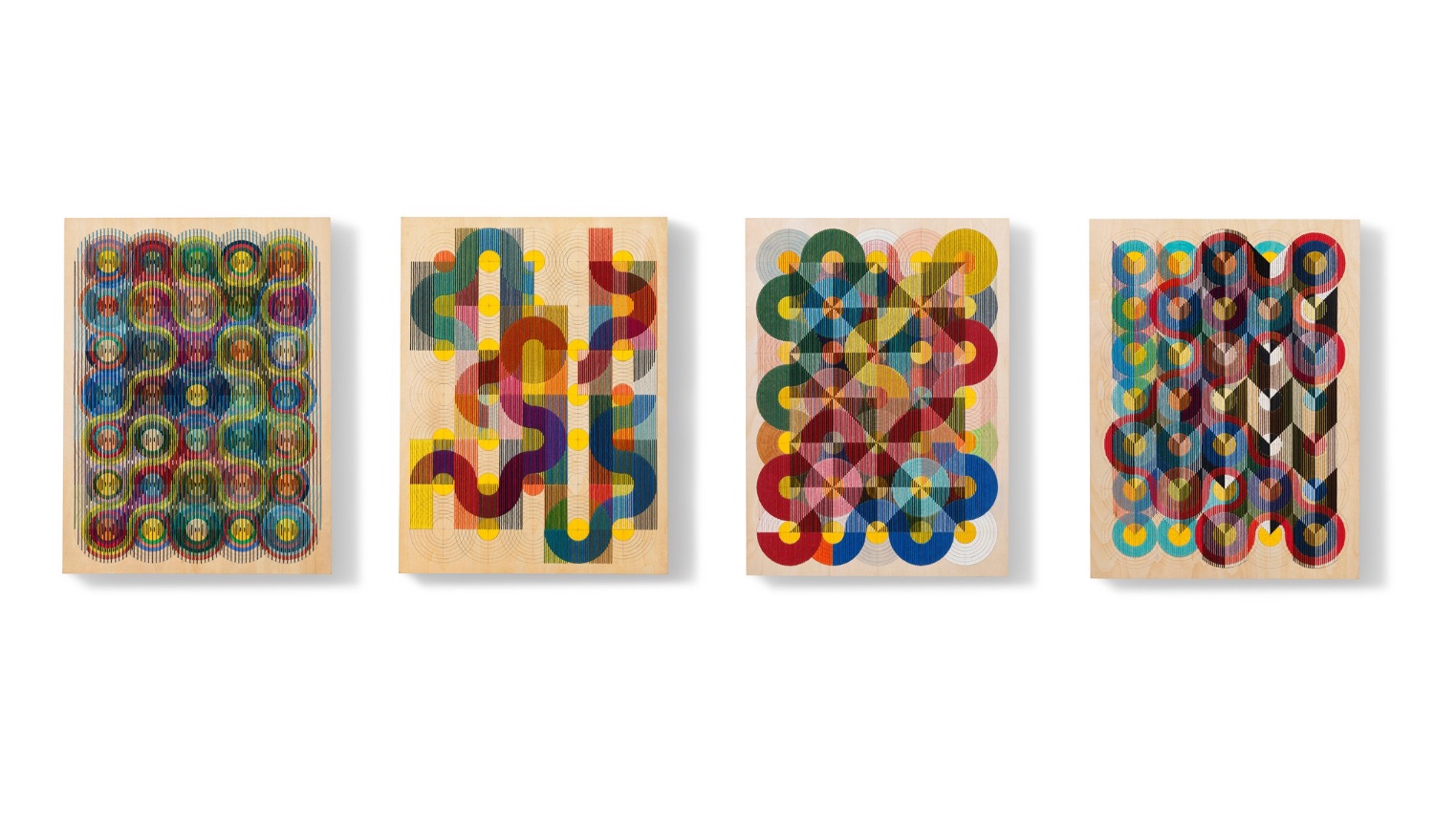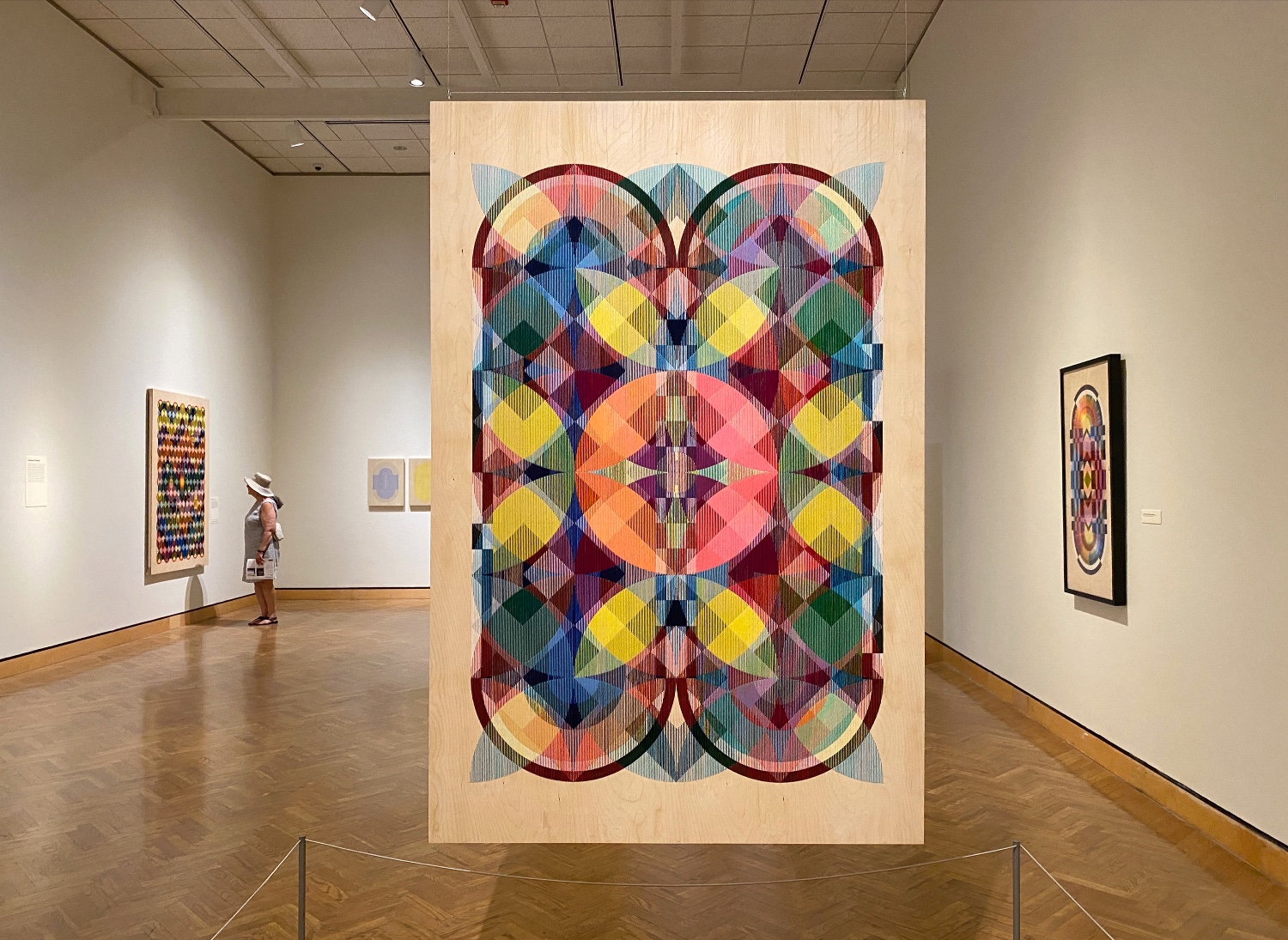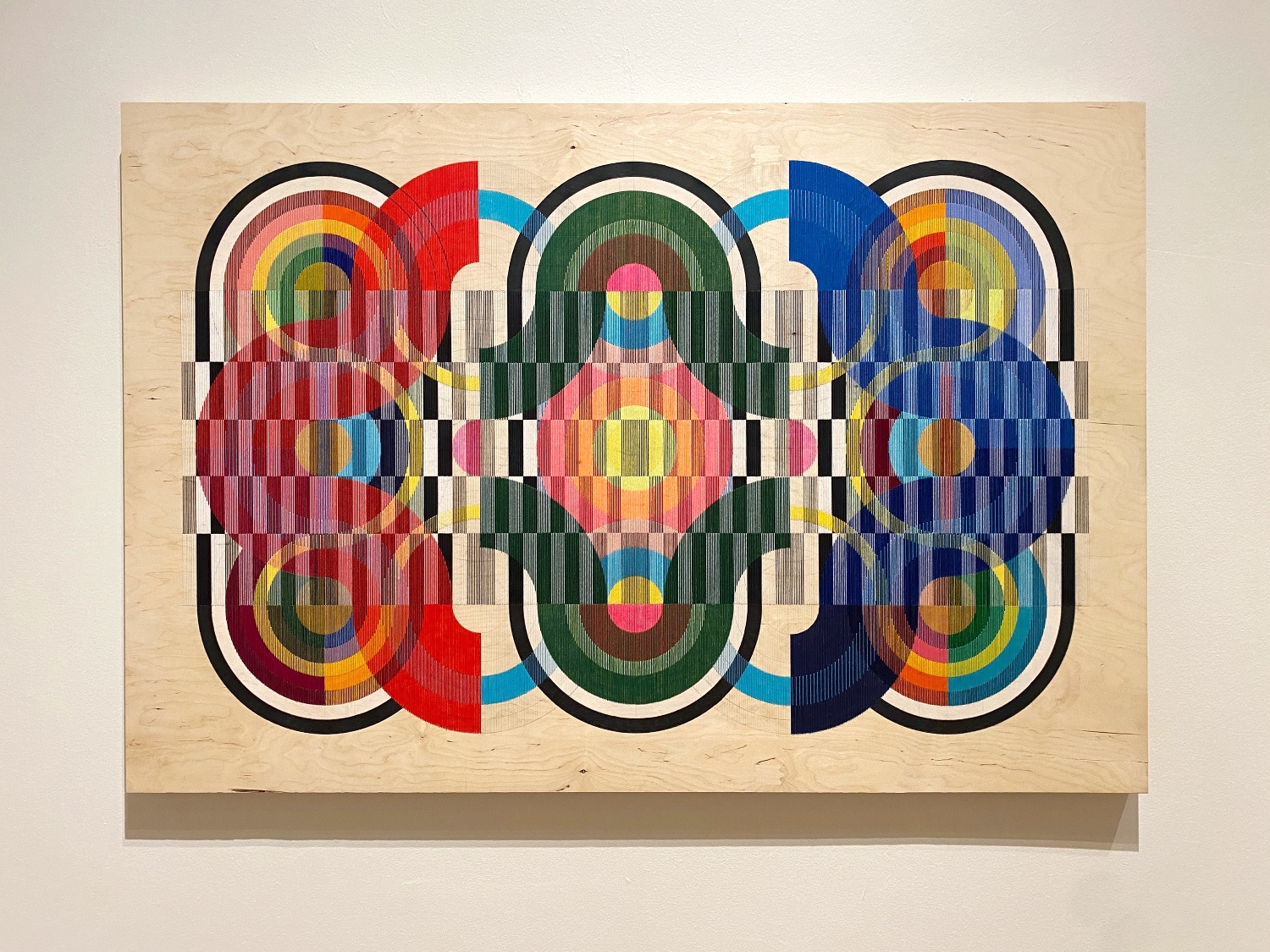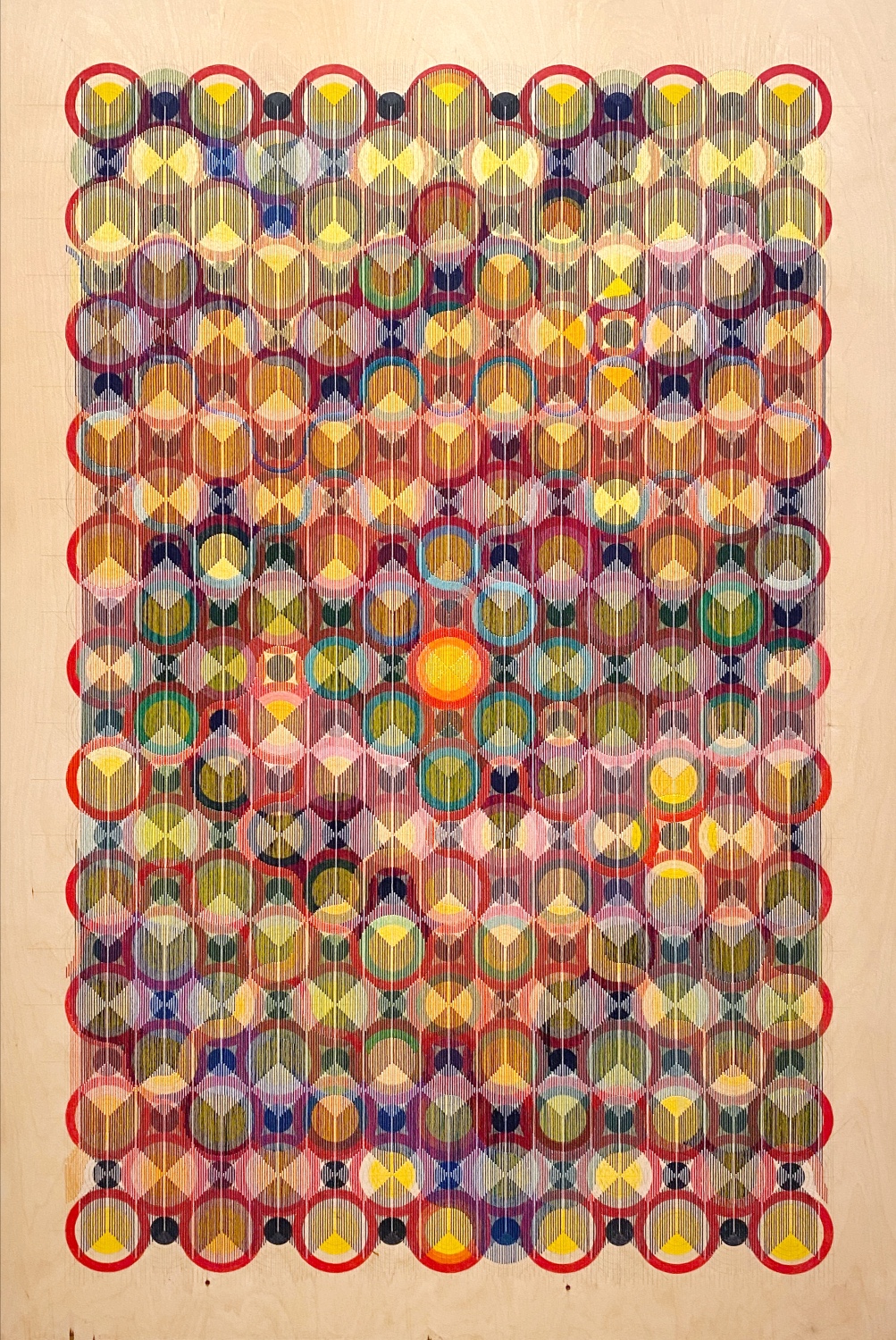
Family Ties: Tia Keobounpheng's 'Revealing Threads' at Mia
Published August 29th, 2023 by Micah Ruelle
The current MAEP show features intricate, gorgeous, and geometric textile works as acts of decolonization
Tia Keobounpheng’s Revealing Threads series “reveals” less than the title claims — which is exactly the point.
The exhibition title struck me immediately as a kind misnomer. All of Keobounpheng’s work in this series remains solely within the realm of abstract art. The only exception to this rule is WayFind, a 5:36 min. looped film, in which Keobounpheng captures her explorations of Northern Scandinavia via video and drone. All of this footage was captured while she wore a dress she designed specifically for this exploration of her family’s place of origin. With this context in mind, the rest of the abstract series begs the question: What is being “revealed” and to whom?
The answer is simple, but is so on the surface it can be easily missed: this series is for her. And why shouldn’t it be? In the act of focusing on her personal familial history of Finnish and Sámi (an indigenous people from northern Scandinavia), she’s highlighted what so many of us seek in our own family lines: proof that life goes on, and on, and on.
As an audience, we are invited to witness someone else’s revelation, without being able to decipher exactly what that revelation may be. With that in mind, then, we’re being asked to do something modern listeners and viewers have trouble doing: settling for the impressions of the truth, without understanding the entire truth.

THREADS no 4, 5, 6, & 7, 2022. Thread, colored-pencil, and pencil on wood, 24 x 18" each. Image courtesy of Mia.
In her artist statement, Keobounpheng explains that, “Working abstractly allows me to claim my cultural inheritance and unlearn the effects of colonization. My works are not traditional expressions of Finnish or Sámi culture. They are my means of practicing decolonization. I use geometry metaphorically to honor my ancestors’ wisdom and imagine my belonging within an expansive and interconnected indigenous worldview.”
The term ”means of practicing” caught my attention. It alludes to the fact that while she is measuring, sketching, coloring, and weaving these small threads in and out of their designated holes in wood to create these extravagant tapestries, there’s something more meditative happening? Restorative even? Or maybe at, the very least, contemplative.
Throughout the museum, the plaques explain some of the less obvious parts of Finnish and Sámi cultures (i.e. the circular lavvu, a nomadic home designed by the Sami and the Finnish fire foxes of the northern lights), which can be helpful for those unfamiliar. What the descriptions leave out, evident instead in the pieces themselves, is that Keobounpheng is a master of color, shape, and composition.


Top: Revealing Threads installation view. Bottom: WHO DO YOU THINK YOU ARE no9, 2023. Pencil, colored pencil, thread on wood.
In each of the mini-series (Foundations, Threads, Circle Round, and Who do you think you are) within her larger series, there’s a clear focus on color. Each thread and pencil color was meticulously selected, paired, and arranged for a combined optical effect that leaves the viewer in awe of not just the entire pattern that emerges from afar, but how every color is also functioning on minor and even micro levels, too.
Keobounpheng has stated that she’s interested in circular patterns because of her indigenous ancestry and seeks to honor them in that shape. This can be especially enjoyed in the Circle Round series. In many ancient cultures, the circle is considered a symbol for a kind of spirituality (not just gods but the sun, the moon, the earth, planets, etc.). Her woven, patterned pieces shed light on what it is to tell a story that has no beginning nor end. These patterns illuminate what infinity or divinity might be (maybe both).
As if mastering color and shape wasn’t challenging enough, Keobounpheng is intensely interested in composition. You can track her early work in this exhibit and witness how she seeks to complicate and contort the patterns that emerge thereafter using a variety of methods (leaning into shape, color, contrast, different threading materials, etc.) for different kinds of emphasis.
Keobounpheng is a keen and scrupulous student of the foundations of visual art, but she also knows when to let us in. Arguably, Keobounpheng’s most intimate piece in the collection is THREADS no9, which is meant to represent Keobounpheng’s family lineage. She is represented by a neon circle in the middle and has four surrounding circles, signifying her grandparents boxed around her, with additional circles representing generations of parents long before that. What is being revealed to her here? What can she show us about our own place in our own families stretching back? How do we revisit who we were prior to colonization? How will we “practice” towards a better future? ◼︎

THREADS no9, 2023. Pencil, colored pencil, thread on wood, 72 x 48".
Tia Keobounpheng: Revealing Threads is on view now through October 29 in the U.S. Bank Gallery in the Minneapolis Institute of Art. To see more of the artist's work, visit tiakeobounpheng.com or follow her on Instagram @tiakeobounpheng.
This activity is made possible by the voters of Minnesota through a grant from the Metropolitan Regional Arts Council, thanks to a legislative appropriation from the arts and cultural heritage fund. 
We can't do it without you.
Help keep independent arts journalism alive in the Twin Cities.